This essay sets out to examine and clarify the historical development of the ideological concept of Pan-Slavism, which was created by the writers of Dalmatia and Croatia at the time of the late Renaissance and early Baroque (from the end of the 15th century to the very beginning of the 18th century). The literary works of that time by many of Dalmatia’s and Croatia’s writers deal with the ethnolinguistic aspect of Pan-Slavic unity, solidarity, kinship, and reciprocity. Their writings established an ideological framework for making both Pan-Slavic common national identity and program of the united single national state of the South Slavs in the Balkans. This “ethnolinguistic” framework of Pan-Slavic, and especially South Slavic, national identity became in the 19th and the 20th century the cornerstone of national ideology of “Yugoslavism” and “Pan-Slavism” which ultimately led to the creation of Yugoslavia in 1918 and its recreation in 1945. The main aspect of the ideology of Pan-Slavism and “Yugoslavism” that was developed in the literature and historical writings in Dalmatia and Croatia from 1477 to 1706 was based on the old domestic thought and tradition that all Slavs originated in the Balkans and that the South Slavs are autochthonous inhabitants of this peninsula.
Dalmatian and especially Ragusian (Dubrovnik) humanists in the 16th century accepted the old domestic thought that all Slavs originated in the Balkans and that the South Slavs are autochthonous inhabitants of the peninsula. More precisely, the entire Slavic population had their own forefathers in the ancient Balkan Illyrians, Macedonians, and Thracians. Principally, the ancient Illyrians were considered as the real ancestors of the Southern, Eastern and Western Slavs. Consequently, according to this belief, the Eastern and Western Slavic tribes emigrated from the Balkans and settled themselves on the wide territory of Europe from the Elbe River in the west to the Volga River in the east [about the western borders of Slavic extension in the early Middle Ages see, Engel 1979, 36]. However, the South Slavs remained in the Balkans – the peninsula that was considered as the motherland of all Slavonic peoples [Историја народа Југославије 1960, 224−227]. Subsequently, all famous historical actors originated in the Balkans were appropriated as members of the Slavdom: Alexander the Great of Macedonia, Aristotle, St. Jerome (Hieronymus), Diocletian, Constantin the Great, SS. Cyril and Methodius, etc.
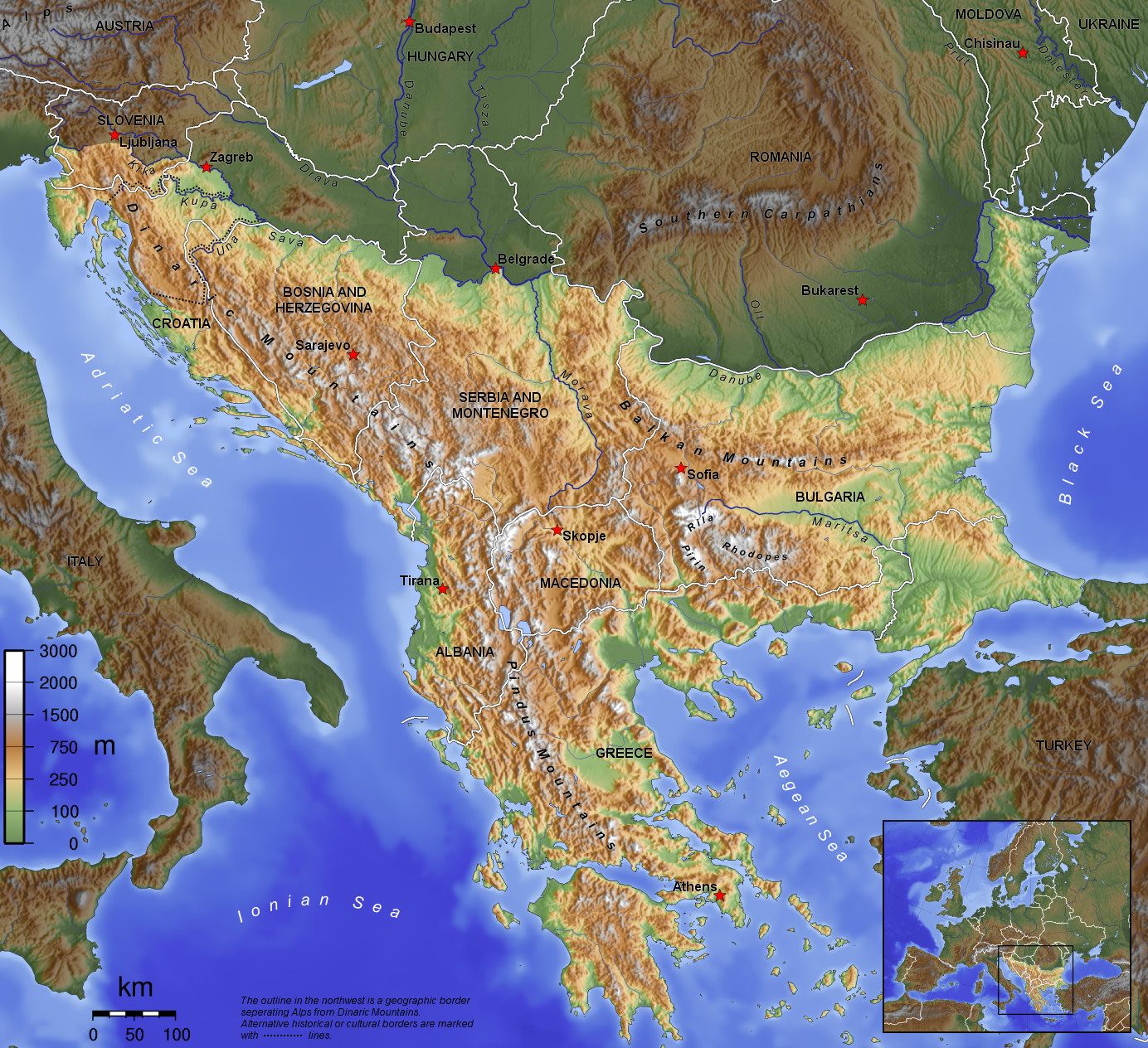
Famous Ragusian humanistic “poeta laureatus” Ilija Crijević (Aelius Lampridius Cervinus, 1463–1520), for instance, knew that inhabitants of his born-city were of both Roman and Slavic origins as he pointed it in his poem Oda Dubrovniku (“Ode for Dubrovnik”). Crijević in his work Super comoedia veteri et satyra et nova, cum Plauti apologia (“Apology for Plaut”) called the language of the ordinary people from Ragusa/Dubrovnik as “stribiligo illyrica” (“Illyrian solecism”), or as “scythica lingua” (“Scythian language”), following the tradition that ancient Slavs are called among other names and as Scythians and Sarmatians. These two old Indo-European Iranian people lived during the time of ancient Greeks and Romans on the territory of present-day South Ukraine and Russia (from the Volga River to the Danube River) and became in the Middle Ages synonyms for the Slavs ([Hammond MCMLXXXIV, 3, 5; Westermann 1985, 11, 14–15, 22–23, 24; Fine 1994, 25–26]. About a homeland of the Indo-Europeans see [Mallory 1989; Gimbutas 1985, 185–202]). In the song Qui proavi solio et patrueli culmine regnas, written for Bohemian-Hungarian King Władysław II Jagiello (King of Bohemia 1471–1516 and King of Hungary 1490–1516), Crijević considered the East Adriatic littoral as “Illyrian coast” [Franičević 1983, 310–313; Banac 1991, 29; Tadin 1903, 265–278]. His contemporary, priest Mavro from Dalmatia, in his Glagolitic Breviary from 1460 indicated the town of Salona nearby Dalmatian city of Split as the birthplace of SS. Cyril and Methodius, who were, in fact, the brothers from Salonika. Moreover, these two “apostles of the Slavs”, according to the priest Mavro, were descendants from Roman Emperor Diocletian, and Pope St. Gaius: “V Dlmacii Soline grdě. roistvo svetago Kurila i brata ego Metudie. ot roda Děokliciêna cěsara. i svetago Gaê papi” [Pantelić 1965, 133; Banac 1991, 9]. St. Jerome from Dalmatia was as well appropriated as a Slav and later on exclusively as a Croat. Consequently, the Latin-language Bible, which was written by St. Jerome and used by all Catholic Slavs in Europe, was recognized by Dalmatian Catholics as an achievement of the Slavic Croat. Moreover, St. Jerome was unjustifiably proclaimed as an inventor of the oldest Slavic alphabet – the Glagolitic one, named as well as “Jerome’s script” and later this alphabet became appropriated by Croats as their own original and national alphabet that became used and by other Slavonic peoples.
As a result, the first written Slavic language (named by scholars as Old Church Slavonic), and devised in fact by Constantine (Cyril) and Methodius in the middle of the 9th century [Fine 1994, 302], became appropriated by Croats in the Middle Ages and almost immediately as Croatian national and indigenous literal language. This belief founded an ideological doctrine in the later centuries for claiming that all people (i.e., Slavs) who used this language virtually belonged to Croatian ethnic community. In the late medieval times following a popular tradition about St. Jerome he was assumed as a spiritual progenitor of Croatian people who translated Hebrew and Greek holy writings (“sacre scripture”) to both Latin and Slavonic languages [Štefanić 1963, 34–36]. Even the Roman Catholic Church accepted this popular opinion that St. Jerome was a founder of Slavonic literacy. It is clear from the letter by the Pope Innocent IV (1234–1254) to Philip, the Bishop of Northern Dalmatian city of Senj: “…in Sclavonia est littera specialis, quam illius terrae clerici se habere a beato Jeronimo asserentes, eam observant in divinis officiis celebrandis” [Jelić 1906a, 9]. The same Pope confirmed twice, in 1248 and 1252, the usage of “Jerome’s script” in the liturgy among Catholics in the area of Northern Dalmatia [Jelić 1906a, 9–10]. The Croats were granted once again with the right to use “Jeronimska pismena” (“Jerome’s script”) in 1754 by Pope Benedict XIV in his Ex pastorali munere. In this pastoral letter the Pope named Croats as “Illyrians” [Jelić 1906c, 39–40]. The same alphabet, which according to the local South Slavic tradition originated in Dalmatia, was used among Central European Slavs in the Middle Ages too. Thus, King of Bohemia and Emperor of the Holy Roman Empire of German Nation, Carlo IV (1346–1378) noticed that the church service in the monastery of Emmaus nearby Prague is served in Slavic language according to translation by St. Jerome: “ob reverentiam et memoriam plorisissimi confessors Beati Jeronymi Strydoniensis Doctoris egregii et translatoris interpretisque eximii sacre scripture de Ebraica in Latinam et Sclavonicam linguas” [Jelić 1906b, 5]. However, there are today claims that St. Jerome was ethnic Serb, born in ethnic Serb area in present-day Bosnia (in Bosansko Grahovo), speaking Serb language of Shtokavian dialect and that he was, likewise many other Roman Catholic Štokavian speakers, Croatized by the Roman Catholic church [Бајић 2003].
Still at the turn of the 17th century some of the well-known Dalmatian publicists and scientists, like Dinko Zavorović from Šibenik/Sebenico (Domenico Zavoreo, 1540–1610), believed that the real inventor of Glagolitic script was Slav St. Jerome from Dalmatia (Hieronymus Dalmatiae) [Štefanić 1963, 38–39], while others, like Faust Vrančić as well from Šibenik (Faustus Verantius, 1551–1617) were sure that brothers Cyril and Methodius invented Cyrillic letters but not Glagolitic ones. This opinion resulted in a logical conclusion that all Slavonic peoples who used either Glagolitic or Cyrillic alphabets, in fact, practiced “Illyrian” or “Dalmatian” or “Croatian” script. All of these three script-names became synonyms for the national language and alphabet of the Croats, i.e., Illyrians. As this language and alphabet were used among all Slavs, “Croatian” language and alphabet became ones of the most used and important in the world.
The principal and most influential protagonist of this doctrine became already mentioned historian and philosopher Faust Vrančić who printed the book Dictionarium quinque nobilissimarum Europae linguarum, Latinae, Italicae, Germanicae, Dalmatiae & Ungaricae (“Dictionary of the five most noble European languages, Latin, Italian, German, Dalmatian & Hungarian”) in Venice in 1595. He recognized that “Illyrian”, “Croatian” and “Dalmatian” names are actually the synonyms [Verantius 1595; Vrančić 1971; Banac 1991, 31; Franičević 1983, 675; Cronia 1953; Dukat 1925, 102–136]. According to him, “Dalmatian language” was the purest Slavonic dialect [Banac 1991, 39]. This ideology was followed and further developed into the concept of “Pan-Croatianism” at the end of the 17th century by Croatian nobleman of German origin, Pavao Ritter Vitezović (1652–1713) who saw all Slavs as Slavonic-Croats who spoke Slavonic-Croatian language [Ritter 1689; Ritter 1696; Vitezović 1700]. However, contrary to this Vitezović’s claim, today there are many researchers who claim that autochthonous Balkan people have been the Serbs [Деретић И. Ј., 2009; Милановић М, 2011].
A Dominican from Dalmatian Island of Hvar, Vinko Pribojević (the 15th/16th centuries), did the first written systematization of the doctrine of Slavic origin in the Balkans and their kinship in his speech in the Latin language given for the local aristocracy in the city of Hvar in 1525. This apologetic speech of glorification of the Slavdom was published in Latin in Venice in 1532 under the title De origine successibusque Slavorum (“On Origins and history of the Slavs”). Pribojević suggested that all non-Hellenic well-known personalities from the Balkans in the Antiquity were of Slavic origin, as Macedonians Philip, Alexander, Aristotle, twenty-four Roman emperors born in the Balkans and St. Jerome (Hieronymus). Finally, according to Pribojević, three Dalmatian noble brothers–Czech, Lech, and Rus–were the forefathers of the modern Czechs, Poles, and Russians. Moreover, Pribojević during his three-year period of living in Poland and traveling in other Slavic countries became convinced that all Slavonic peoples spoke a single language. More precisely, according to him, the Russians were speaking “Dalmatian tongue”, and the Slavic appellation was younger than Dalmatian, i.e., Illyrian name [Pribojević 1951, 65–70; Историја народа Југославије 1960, 224; Istorija Jugoslavije 1973, 129; Novak 1951, 9–47; Schmaus 1953, 243–254; Gortan 1958, 149–152; Barišić 1961, 227–257]. According to him, the mythical Illyrus was an ancestor of all Slavs. Thus, this famous Dalmatian humanistic and Renaissance writer connected the history of the Slavs with the history of the ancient Romans and Macedonians suggesting that current Slavic history is a continuation of a glorified history of Roman and Macedonian Empires. The Pan-Slavic doctrine of Pribojević became more influential and known among the South Slavs and other European readers when his speech was translated into Italian and published in Venice in 1595.
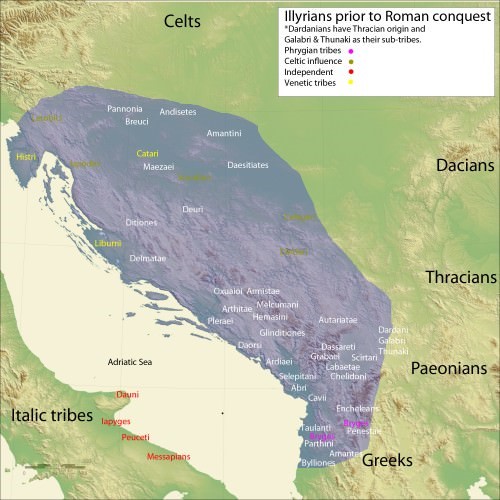 This Pribojević’s thought was followed by many various South Slavic writers among them the most important became the abbot of a Benedictine congregation, a historian from Ragusa (Dubrovnik), whose family came to this city-Republic from Kotor (present-day a Montenegrin city), Mavro Orbin, “Dalmatian Thucydides” (Mauro Orbini, d. 1611 or 1614). Orbin wrote the first and most influential general Slavic history published in Pesaro 1601 under the title Il Regno degli Slavi (“The Slavic Kingdom”) based mainly on the old popular tradition upon the origins of the Slavs. The book was translated into Russian by Sava Vladislavić who was a Serb retainer of the Russian emperor Peter the Great and published in St. Petersburg in 1722. Orbini further developed an idea that all Slavs spoke a common language named as “Illyrian” (“Lingua Illyrica”) and that their “national languages” were in fact only dialects of mutual Slavic inter-dialect (koine), which was called among Dalmatians and Ragusians simply as naš/naški (“our”) or slovinski (“Slavic”) language. Orbin accepted the way of thinking of various writers of medieval chronicles from Poland, as well as of Pribojević and Pope Pius II (1405–1464) that the ancestors of the Czechs, Poles and Rus’, i.e., the legendary brothers Czech, Lech and Rus, were actually natives of the Roman province of Illyricum, which was called in Pribojević-Orbini’s times as Dalmatia [Orbini 1601; Orbin 1968, 11–62; Radojčić 1950, 80–82; Matić 1950, 193–197; Историја народа Југославије 1960, 227]. The ancient notion that Dalmatia encompasses the main portion of the Balkan Peninsula was alive in Vitezović’s time as well. For instance, a founder of Croatian critical historiography, Ivan Lučić 1604–1679, a native from Dalmatia, issued a map entitled Dalmatia post Imperii declinationem in Croatiam, Serviam et Dalmatiam ipsam distancta (“Dalmatia after the fall of the Empire divided into Croatia, Serbia and Dalmatia proper”) claiming that Western and Central Balkans belonged to the province of Dalmatia.
This Pribojević’s thought was followed by many various South Slavic writers among them the most important became the abbot of a Benedictine congregation, a historian from Ragusa (Dubrovnik), whose family came to this city-Republic from Kotor (present-day a Montenegrin city), Mavro Orbin, “Dalmatian Thucydides” (Mauro Orbini, d. 1611 or 1614). Orbin wrote the first and most influential general Slavic history published in Pesaro 1601 under the title Il Regno degli Slavi (“The Slavic Kingdom”) based mainly on the old popular tradition upon the origins of the Slavs. The book was translated into Russian by Sava Vladislavić who was a Serb retainer of the Russian emperor Peter the Great and published in St. Petersburg in 1722. Orbini further developed an idea that all Slavs spoke a common language named as “Illyrian” (“Lingua Illyrica”) and that their “national languages” were in fact only dialects of mutual Slavic inter-dialect (koine), which was called among Dalmatians and Ragusians simply as naš/naški (“our”) or slovinski (“Slavic”) language. Orbin accepted the way of thinking of various writers of medieval chronicles from Poland, as well as of Pribojević and Pope Pius II (1405–1464) that the ancestors of the Czechs, Poles and Rus’, i.e., the legendary brothers Czech, Lech and Rus, were actually natives of the Roman province of Illyricum, which was called in Pribojević-Orbini’s times as Dalmatia [Orbini 1601; Orbin 1968, 11–62; Radojčić 1950, 80–82; Matić 1950, 193–197; Историја народа Југославије 1960, 227]. The ancient notion that Dalmatia encompasses the main portion of the Balkan Peninsula was alive in Vitezović’s time as well. For instance, a founder of Croatian critical historiography, Ivan Lučić 1604–1679, a native from Dalmatia, issued a map entitled Dalmatia post Imperii declinationem in Croatiam, Serviam et Dalmatiam ipsam distancta (“Dalmatia after the fall of the Empire divided into Croatia, Serbia and Dalmatia proper”) claiming that Western and Central Balkans belonged to the province of Dalmatia.
A Canon Juraj Ráttkay (1612–1666) in his work Memoria regnum et banorum regnorum Dalmatiae, Croatiae et Sclavoniae (“Remembrance of the kings and bans of the kingdoms of Dalmatia, Croatia and Slavonia”), printed in Zagreb in 1652, located the birthplace of the brothers Czech, Lech and Rus in the Northwestern Croatia around the Krapina region that is 50 km. far from Zagreb on the border with Slovenia. Both Orbini and Ráttkay became familiar with personal experiences upon Slavic ethnolinguistic kinship of several South Slavic travelers who visited Polish-Lithuanian Commonwealth and Muscovy in the 16th and 17th centuries like: Ragusian physician and bishop Tomo Nadal Budislavić (1545–1608) who lived several years in Krakow (Cracow/Kraków) and Aleksandar Komulović from Split who was working under direction of Pope Clement VIII on organization of the Pan-Slavic military action against the Ottoman Turks for the sake to liberate the South Slavs and for that purpose he travelled to Polish-Lithuanian Commonwealth and Muscovite Russia (1594–1598) [Rešetar 1915, 136–141; Gluck 1939, 150–154; Bazala 1954, 255–259; Kolendić 1962, 211–240; Žic 1935, 162–181; Vanino 1936, 40–54; Štefanić 1938, 1–50; Ćorović 1993, 436].
A popular legend upon Slavic ethnic-linguistic kinship and common origin in the Balkans that became systematized by Mavro Orbin had a strong influence among the 17th-century South Slavic writers and public workers. Thus, the most prestigious and celebrated South Slavic author from Dubrovnik, Ivo (Dživo) Gundulić (1589–1638), praised in his poem Osman the Slavic victory of future Polish king and Lithuanian grand duke, Władysław IV Vasa (Vladislovas IV Vaza, 1632–1648), over the Turks in Chotin in 1621. Gundulić hoped that Władysłw’s army will cross the Danube and liberate all South Slavic population from Ottoman yoke. Finally, Gundulić suggested to the prince Władysłw to re-establish medieval Serbian Empire and to take a title of Serbian emperor. Subsequently, Kingdom of Poland, Grand Duchy of Lithuania and Serbian Empire would be united by a personal union in the name of Władysłw IV Vasa. Gundulić, like many others, followed the pattern of Pribojević and Orbin that famous historical figures from the Balkans belonged to the family of the Slavs. For example, he called Alexander the Great of Macedonia as the Serb (“Serbljanin”) [Историја народа Jугославије 1960, 227–228; Samardžić 1983, 94; Istorija Jugoslavije 1973, 193; Ćorović 1993, 436].
The awareness of the existence of a mutual spoken language of all Slavs inspired a great number of South Slavic scholars in the 16th and 17th centuries to work on the creation of a single South Slavic and Pan-Slavic literal language taking as a model the local South Slavic, i.e., Illyrian, dialects. The most successful in this matter was Jesuit Bartol Kašić (1575–1650), from the Dalmatian Island of Pag who lived in Dubrovnik as well, and who was working for many years as a missionary among the South Slavs within the Ottoman Empire. He recognized that all Slavic subjects of the Ottomans spoke one language and thus he chose a Štokavian (Štokavski) dialect spoken in Bosnia and Herzegovina as a model for his common South Slavic grammar published in 1604 in Rome under the headline Institutionum linguae illyricae libri duo. Authore Bartholomeo Cassio Curictensi Societatus Iesu (“Foundations of Illyrian language”) [Cassio 1604; Kašić 1997, 15–75; Šrepel 1890, 172–201; Stojković 1913/1914, 1–9; Stojković 1919, 170–263; Laszowski 1923, 2; Vanino 1934, 123–127; Vanino 1940, 1–144; Cronia 1952, 22–37; Gabrić-Bagarić 1976, 55–68; Gabrić-Bagarić 1984]. With much less success was an attempt to create a single South Slavic inter-dialect by the literal circle around Slovenian Protestant and reformer of Slovenian language, Primož Trubar (1508–1586), who called himself as “Illyrian patriot”. Their idea was to create a single South Slavic literal, i.e., Illyrian language, by combining all South Slavic dialects and Latin and Cyrillic alphabets into a single South Slavic language and alphabet [Istorija Jugoslavije 1973, 124–134].
Croatian Jesuit student and forefather of the 19th-century Slavophilia and Pan-Slavism [Wandycz 1997, 86], Juraj Križanić (1618–1683) who devoted his life to bring together all Slavs predicting their glorified future succeeded finally to form a single Slavic inter-dialect or mutual Slavonic literal language. Working on the Pan-Slavic ethnolinguistic unity of all six Slavic peoples (according to Križanić, the Rus’, Poles, Czechs, Bulgarians, Croats, and Serbs) he chose the speech of the Ozalj area in West Croatia nearby Slovenia as a model for a single Slavic literal language. His opinion was that spoken language of Ozalj area was the purest and the closest to the original Pan-Slavic tongue in both grammar and accent. The reason for such opinion came from the fact that the spoken language of this area had inter-dialectical character as it was consisting of three the most spread South Slavic dialects: Štokavian, Kajkavian, and Čakavian (Štokavski, Kajkavski and Čakavski) [Križanić 1859, iii–iv; Golub 1976, 100–103; Šmurlo 1926, 3–4; Šmurlo 1927, 321–325; Težak 1996, 85–94].
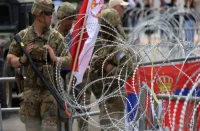
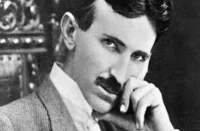
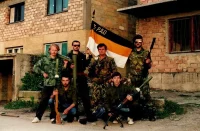











Believing the author Yugoslavism and Pan-Slavism are South-Slav adoption, by mimicry, of the German Worldview, particularly from the German Idealism and Romanticism. If the German have Pan-Germanism we, the South-Slavs, the Slavs, must have the Yugoslavism, Pan-Slavism.
And believing also the author his narrative shows the great danger of Fake History. And it is irrelevant that the Fake History is fake because people lost the memory of their history and begin telling tales, or that it is fake because somebody thinked that it was a good idea to tel lies, to weaponize history.
There are many relevant sources of the time which clearly suggest that the Danubian region attached to the Balkans was the original land of the Slavic migrations to the North-West and North-East. Only one of them is Nestor’s chronicle “Povest Vremenih Let”.
We in Portugal know very little, almost nothing, about the History of Central and Eastern Europe because it was not, nor it is, our Cultural and Geopolitical Zone. Our current interest stems from the fact that Portugal belongs to NATO and that NATO is in conflict with Russia. So we are studying the history of these regions.
Reading yours article, it seemed to me that the intellectuals who launched the ideology of Pan-Slavism had all been educated by the Germans at the Holy Roman Empire, or the Austro-Hungarian Empire. Therefore the question of substance is not the cradle of the Slavic Peoples but if the West Slavs mimetized the Germans.
The ideology of Pan-Slavism historically was a reaction to German and Italian occupation of the South Slavic lands in the Balkans.
Unfortunately, this material reiterates the Russian propaganda circulating over 2 centuries. The terms ‘Slavic’ as the author must very well know, was cooked during the reign of Ekaterina the Great, to justify the old ‘Third Rome’ Russian ambition. To defy Slavic people as Scythians or Sarmatians is dubious at best. No one until 17-18 century has ever used the term Slavic. Some people were referred to as “Sloveni” meaning able to read/write. The ‘Old Church Slavonic’ language is ordered, paid for by the Bulgarian king Simeon I and created by Clement of Ohrid.
To Backway
You are obviously a well payed protagonist of German Drang nach Osten imperialistic policy against the Slavs and especially Russians. BTW, your general knowledge on Slavonic history and philology is extremely poor.